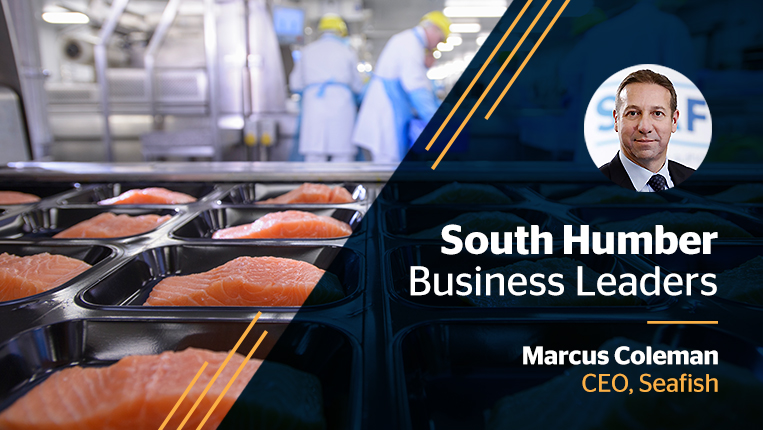Leading the UK’s Seafood Industry Catalyst: An Interview with Marcus Coleman CEO, Seafish
11:45 am, Tuesday, 30th April 2019 - 5 years ago

Marcus Coleman explains why the Grimsby area is the UK seafood industry’s home base, and how local investment is supercharging the industry’s future.
What does Seafish do?
Seafish is a Government-sponsored organization that works closely with the UK’s seafood industry. CEO Marcus Coleman sums up its remit as “from catch to plate”.
“Each time fish is landed in the UK, whether from a fishing boat, a freight ship or an aeroplane, a small percentage of its price goes to Seafish as a levy,” explains Marcus. “We use this communal budget to improve and safeguard the industry’s sustainability, responsibility and ongoing success.”
As well as supporting the catching, exporting and processing of ocean produce, Seafish lobbies for regulatory change and provides a co-operative marketing platform to boost consumer demand for seafood.
Insights on an industry
An important part of Seafish’s role is to provide a research base, offering both the industry and the government an overview of current and emerging trends.
“We provide industry insights and data analysis on things like what kinds of fish people are eating, how different categories are performing, and demographic trends in the industry workforce” says Marcus. “We relay that back to the government to help inform policy and strategy, and it’s also available to businesses in the industry.”
Raising standards and delivering skills
Because seafood has a short shelf-life, it must be able to go from freight to plate quickly and efficiently, to avoid losing its value. Seafish provides training in receiving and processing seafood products, whether locally caught or coming in from overseas.
“We train staff in filleting fish, preparing it, workplace safety and factory protocols for a food service environment,” explains Marcus.
Access to specialist training close by means food businesses can upskill new staff quickly, and keep workforce knowledge continually up-to-date.
“We’re able go into local Grimsby businesses, understand their training needs and connect them to the most suitable providers,” says Marcus.
“Collaboration is our thing”
“The core purpose of Seafish is to bring everybody together,” says Marcus. “Structures like forums and interest groups bring the different stakeholders together for constructive discussion, whether it’s common agreements on how we do things, getting a message to government, or gaining a deeper understanding of something through research.”
Another example is the collective marketing of seafood. “Every company has its own approach and products, but we can help by creating a platform,” says Marcus. “Seafood Week in October is an event that helps generate demand by highlighting the benefits of seafood, and we see big sales boosts as a result.”
The Grimsby advantage
Put simply, Grimsby is the beating heart of the UK’s seafood industry. It’s primarily a processing centre, and home to many of the major players in fish importing and processing, like Young’s, Seachill and Flatfish. Around 5,000 local jobs depend on the seafood supply chain.
Seafish’s expertise is an excellent resource for the industry, particularly since it’s available right on the doorstep. “Having Seafish as a local partner is a real benefit for both us and seafood businesses,” says Marcus. “We can just pop 10 minutes down the road for a face-to-face meeting – having industry advisors we can call on helps us to get the most out of our budget.”
Future growth potential
During its 11 years headquartered in Grimsby, Seafish has seen the town flourish as a result of regeneration investment.
“We’re really encouraged by that, and by the area’s potential for higher education development, which will generate more research. The seafood industry is the number one employer in this area, so we’re excited by the investment made so far and we’re enjoying the facilities it has provided.”